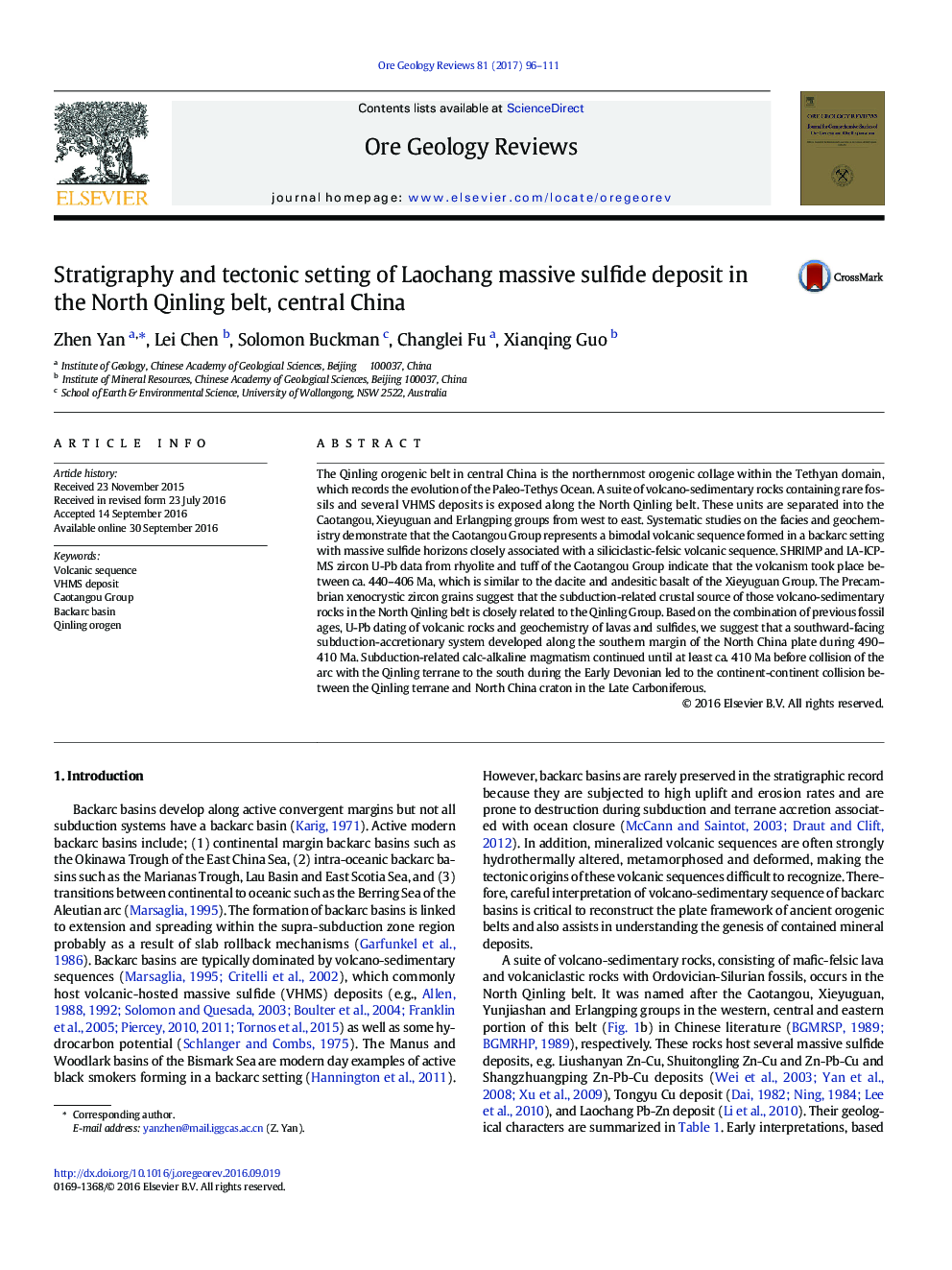| کد مقاله | کد نشریه | سال انتشار | مقاله انگلیسی | نسخه تمام متن |
|---|---|---|---|---|
| 6482014 | 1413928 | 2017 | 16 صفحه PDF | دانلود رایگان |
- The Caotangou Group represents a ca. 490-410 volcanic sequence of the backarc basin.
- Subduction-related volcanism did not stop at ca. 410Â Ma in the North Qinling belt.
- VHMS deposit in the North Qinling belt developed in a backarc basin during ca. 440-410Â Ma.
The Qinling orogenic belt in central China is the northernmost orogenic collage within the Tethyan domain, which records the evolution of the Paleo-Tethys Ocean. A suite of volcano-sedimentary rocks containing rare fossils and several VHMS deposits is exposed along the North Qinling belt. These units are separated into the Caotangou, Xieyuguan and Erlangping groups from west to east. Systematic studies on the facies and geochemistry demonstrate that the Caotangou Group represents a bimodal volcanic sequence formed in a backarc setting with massive sulfide horizons closely associated with a siliciclastic-felsic volcanic sequence. SHRIMP and LA-ICP-MS zircon U-Pb data from rhyolite and tuff of the Caotangou Group indicate that the volcanism took place between ca. 440-406Â Ma, which is similar to the dacite and andesitic basalt of the Xieyuguan Group. The Precambrian xenocrystic zircon grains suggest that the subduction-related crustal source of those volcano-sedimentary rocks in the North Qinling belt is closely related to the Qinling Group. Based on the combination of previous fossil ages, U-Pb dating of volcanic rocks and geochemistry of lavas and sulfides, we suggest that a southward-facing subduction-accretionary system developed along the southern margin of the North China plate during 490-410Â Ma. Subduction-related calc-alkaline magmatism continued until at least ca. 410Â Ma before collision of the arc with the Qinling terrane to the south during the Early Devonian led to the continent-continent collision between the Qinling terrane and North China craton in the Late Carboniferous.
Journal: Ore Geology Reviews - Volume 81, Part 1, March 2017, Pages 96-111
